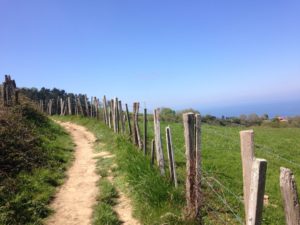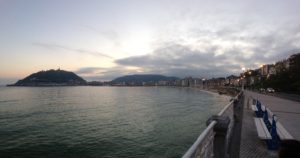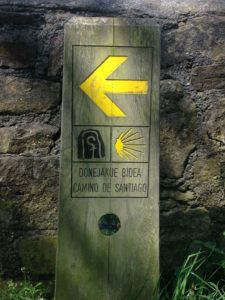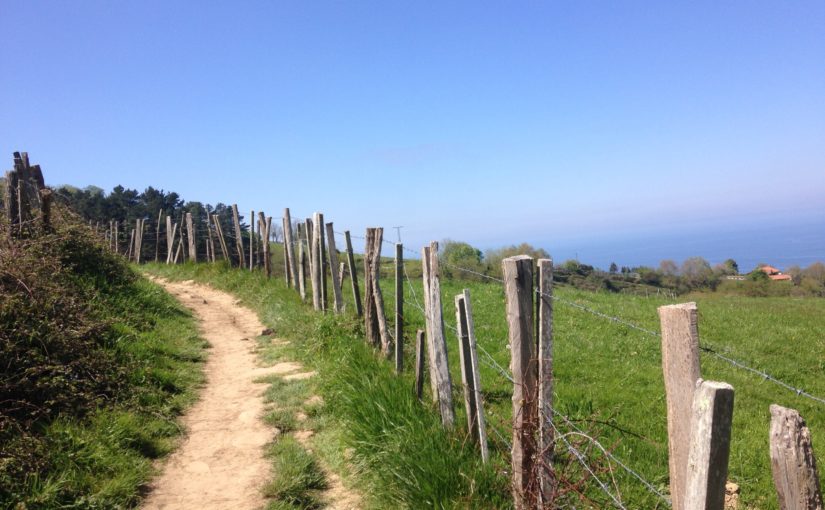I’m not going to lie. Most of the time when you tell someone you are going to willingly walk over 100 km (62 miles) across a country, they give you that “you’re definitely crazy” look.
Upon arriving in Spain for my semester abroad, it was never in my plans to hike the Camino de Santiago, or the Way of St. James. I am not really sure how it happened, I would like to think it was fate, but somehow I was matched with a pretty awesome roommate that turned to me one day and popped the question.
The Camino de Santiago is rooted back to the ninth century when the forgotten tomb of the Apostle St. James was discovered in the northwestern part of the Iberian Peninsula. It didn’t take long for the news to spread across the world.

Today, a total of 12 Caminos de Santiago make up an intricate network of routes all leading to Santiago de Compostela. While the main route, the Camino Francés, is the most popular, thousands of pilgrims find themselves each year beginning their journey from any of the major cities in Spain.
The length of time it takes to reach Santiago de Compostela depends on the pilgrim and the starting location. With a limited time frame of five days, we knew we would only be able to complete a small portion of the Camino this time around. Our original plan was to stick closer to home, starting in our host city of Valencia and following the Camino de Levante.
However, the Camino de Santiago had a bigger plan for us. A week before heading out, a friend decided to join us on our journey and suggested the Camino del Norte, or the Northern Way.

Before we knew it, we had overnight bus tickets booked and were registered to hike from San Sebastián to Bilbao over Semana Santa (Holy Week) and Pascua (Easter). In a matter of 24 hours, our entire plans had changed.
When the night of our departure finally arrived, I walked out the door with my beat up pair of tennis shoes and my school backpack packed with a spare set of clothes, extra socks, a small sleeping bag and my Credencial del Peregrino, or Camino passport.
Only the bare necessities are desired for a trip like this. We were finally on our way for an adventure of a lifetime and I was ecstatic.
We arrived at San Sebastián in the early hours of the morning and found our way to the coastal city’s picturesque beach, Playa de La Concha, where waited for the sun to rise to explore the rest of the city before beginning the trek.
At each stop along the Camino, two stamps are required in the Camino passport as proof of one’s journey. Stamps can be attained anywhere, most commonly in churches, albergues and other official establishments. When Pilgrims arrive in Santiago de Compostela, with proof they have walked the minimum distance of 100 km, they are then able to apply for their Compostela, or their certificate of pilgrimage.

Once the city awoke, we were on our way after wandering into several churches and receiving our stamps. The Camino del Norte had officially begun.
We climbed mountains just to walk back down, wandered through small towns one minute and the Spanish countryside the next. Cattle and sheep greeted us as we passed and the Atlantic Ocean seemed to be always over our shoulder.
At times we found ourselves walking down urban roads, while other times we ventured down dirt trails through the forests. Wherever the arrows pointed, we went.
During our journey, we stayed in a variety of places. One night, a convent, the next, a train station.
Each morning, pilgrims set off on the next leg of their journey early in order to allow enough time to claim a bed at the next albergue.
Amazing as the journey sounds with breathtaking views all around, our group didn’t escape the hardships of the Camino. Each night we went to bed exhausted only to wake up sore. Regardless, we put our shoes back on over our blisters and carried on because that’s what you do.
Unfortunately, one day we were forced to catch a bus to the next city, as signs of potential injuries were showing from continuous walking. Taking a bus for part of the journey was not part of the plan, but sometimes you have to listen to your body.
In the final leg of our journey, we descended the hillside into Bilbao.
Regardless of our setbacks and our amateur selves taking on the Camino de Santiago with no prior training, just the pure luck of being young, I have no regrets. Some things are out of your control and you just have to roll with the punches and take it as it comes.
With the Camino de Santiago, it’s not just the final destination; it’s also the journey along the way. There will be setbacks. There will be hardships. There is always going to be another mountain to climb, another bridge to cross. Muscles will be sore, and blisters will be formed in all their glory. Some days will feel great while others seem to trudge on.
The Camino de Santiago is not easy, but the journey is worth it. I was lucky enough to experience only a small part of the Camino.
Know this: someday I will be back to finish the rest.
